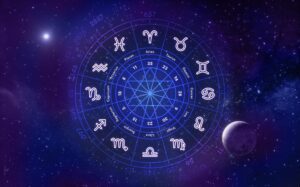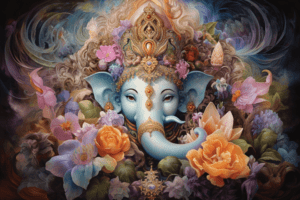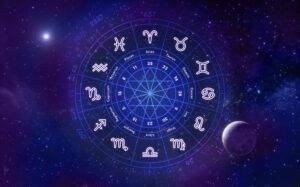Who wrote hanuman chalisa?
“Who wrote Hanuman Chalisa?” is a question that echoes through the corridors of devotion, seeking its answer in the depths of spiritual history. The sacred hymn, revered by millions, traces its origin to the esteemed poet and saint Tulsidas. Tulsidas, renowned for his literary genius and spiritual insights, penned the “Hanuman Chalisa” in the 16th century.
The question “Who wrote Hanuman Chalisa?” invites seekers to unravel the profound connection between Tulsidas’ divine inspiration and the timeless verses that extol the virtues of Lord Hanuman. Tulsidas’ composition of the “Hanuman Chalisa” remains a beacon of devotion, guiding devotees on a spiritual journey that intertwines faith, wisdom, and reverence. As devotees chant the “Hanuman Chalisa” and ponder the question “Who wrote Hanuman Chalisa?” they delve into a sacred realm where devotion meets divine revelation, bridging the mortal with the immortal in the eternal praise of Lord Hanuman.
Who Wrote Hanuman Chalisa? Hanuman Chalisa Written By Goswami Thulasi Das.
The Hanuman Chalisa, a devotional hymn dedicated to Lord Hanuman, was composed by the renowned Indian saint and poet Tulsidas. Tulsidas was a Hindu poet-saint who lived in the 16th century and is best known for his contributions to devotional literature in the Awadhi language. He is especially famous for his epic work, the “Ramcharitmanas,” which narrates the life of Lord Rama.
Tulsidas composed the Hanuman Chalisa as a part of his devotion to Lord Hanuman and to convey the greatness and qualities of Hanuman, who played a crucial role in the Ramayana, a Hindu epic that tells the story of Lord Rama.
The Hanuman Chalisa consists of 40 verses in praise of Hanuman and is a widely revered and recited text in Hinduism. It is cherished for its poetic beauty, spiritual significance, and its ability to invoke the blessings and protection of Lord Hanuman.
Who Wrote Hanuman Chalisa? Life Story Of Goswami Thulasi Das
The majesty of Ramnama is to be known as an experience but the feeling that no one can express perfectly is that Ramnama Tattva. One of the perfect devotees with such a philosophy, Goswami Tulsidas was revered by Rama devotees.
Goswami Tulsidas was born in the village of Rajpura in the state of Uttar Pradesh in about 1532 CE to the pious couple of Sat Brahmins Atmaram Shukledub and Hule. He was called Tulseeram and Rambola.
Tulsidas was brought up by his elder aunt Pidapa, whose parents had passed away a few years ago. After her death, Ayodhya resident Agu Narahari Goswami appeared to Tulsidas while wandering around and taught him the philosophy of Ramana.
After that he spent 12 years in the temple of Seshasanatana Swami in Kashi, studied Veda Parayana and Vedic studies, came back to his native village Rajpuri and saw his house, rebuilt it with the help of the villagers and chanted Ramayana with his whole mind only on Rama’s Tattva and Rama’s merits. The people of the surrounding villages were impressed by his speech.
All the people of that town look after Ethan, who constantly remembers Rama’s name. When Pidapa came of age, he was married to Ratnavali (Buddhimati), the daughter of a Brahmin named Dinabandhu Pathak, who lived on the other side of the river Yamuna near Rajpurki, the beautiful and virtuous Ratnavali.
From the time of marriage, the wife is a slave to beauty and forgets that Param Dhamu and lives only with Ratnavali, and it is also difficult for them to reconcile. In such a situation, the people who came from neighboring villages to recite Tulsidas’ Ramaganam in their village were not counted.
Ratnavali called her husband in and said, “You are perfect in singing the story of Rama, and it is right to say that devotees like you do not come like this.”
In the meantime, Ratnavali’s elder brother came to Rajpuri and said that his mother was not feeling well and was dying, but since her husband was not in town, she would come and tell him, that is, all the neighbors would come and tell your husband. Ratnavali went to her birthplace when she was told to go see your mother.
Who Wrote Hanuman Chalisa? Tulsidasu, who had come to sing Rama’s story, was in a state of despair when his wife did not appear, and after learning the incident, he traveled to his father-in-law’s house late at night. When Tulsidas reached the Yamuna river, heavy rain started.
As there were no boats there, they swam across the river Yamuna and went to their in-laws’ house, where the front doors of the house were closed. Tulsi Das, who could not bear the pain of separation, looked at the fire in the rain of thunder and lightning and went inside with a rope that was visible under the vegetable canopy in the light of the lightning and knocked on the door of the house.
Arya! Why did you come this late at night? Don’t be afraid to listen to all the stories that happened when asked how they came
Arya said that there was no cord and came to look with a lamp. When she went out, she saw a terrible snake cut into pieces. What extravagance do you wish for this body? It is full of blood, flesh and blood.
You will be fascinated by this. There is nothing other than your Self. Goswami Tulsidas felt ashamed and disgusted with himself and left his wife immediately after hearing the words of Ratnavali who said that he who has given a fourth of the love you showed to me can see you, he left his wife and immediately left for Kashi.
Thus Tulsidas, who traveled to Kashi, used to sit somewhere in Kashi and entertain the people there by chanting the story of Rama. In Anusthanam, the remaining mantra water was poured to a clay tree.
One day, after pouring magic water on that tree, a Gandharva appeared and appeared with Tulsidas O Rama Bhakta! What do you want Tulsidas? I have made it clear that Tulsidas Mahatma wants me to see Lord Rama and it is not possible for me to see Lord Rama.
Only Shri Hanuman has the power to make him appear. How to visit Shri Hanuman when asked to beg him? O Ramabhakta when asked! Every day a centenarian comes before everyone else to listen to your Ramagana. He listens to you chanting Ramagana for a long time and forgets his tears. He says that the centenarian who goes last after the Ramagana is said to be Shri Hanuman. On that day, he started to chant the story of Rama.
After hearing Ramaganam with excitement, Goswami Tulsidas saw the centenarian who was leaving for the last time, fell at his feet and prayed to Prasannadu Kammani Paripari, while the devotee Sri Hanuman Gurudev showed his real form to Tulsidas, and the enraptured Tulsidas praised the Hanuman Chalisa containing 40 stanzas of Hanuman’s attributes and deeds. .
This place in Kashi is known as Sankatamochana Hanuman place. After chanting that, Tulsidas prayed to Hanuman and asked Hanuman to give me a glimpse of Lord Rama and blessed him as Tathastu. Next he traveled to Chitrakootam on Hanuman’s orders.
While traveling like that, in the middle of the road, two princes were seen chasing a lady on horses, and Tulsidas scolded the princes for harassing an innocent creature who had no mercy. Then Hanuman appeared and said, “Are you satisfied with the sight of Lord Rama?” Tulsidas was saddened to know that those princes were Rama Lakshmana. Then Hanuman said that you will see Lord Rama again and disappeared.
Who Wrote Hanuman Chalisa? One day, Tulsidas invited the devotees from the neighboring village to come to see that there was a Sri Ramalilalu play in their village, and Tulsidas traveled to that village that day. Thus Tulsidas went to Sri Ramajananam, Tataki Mardanam, Sitaparina, Vanavasa Payanam, Sugriva’s alliance, Hanuman crossed Lanka and seeing Sita mother gave Sri Rama seal and burnt Lanka. to Ayodhya
Tulsidas, who came and was thrilled with the lilas he saw till the coronation with Sitaramalakshmana and Bharatashatrughnu, again returned to his place. In the middle of the road, they saw people from neighboring villages and asked them where they had gone. When they told them about the Rama Leela play at night, they said that they have come from the village today because we are not performing Sri Rama play in the month of Kartikam.
One day when Hanuman in the form of chilaka on a distant tree to prepare the two sons for the performance of Sri Ramalila, heard the words of Hanuman saying that the boy who was doing the tilak was Sri Rama, Tulsi Das saw Tulsidas who was crying without letting go of the boy’s legs, and Lord Rama appeared in his true form. Since then, he has been chanting Rama Kathagana and teaching Rama Tattvam, Tulsidas Sri Hanuman Kripa, who became Bhakta Shiromani and Abhinava Valmiki, has written Ramayana and Ramacharita Manas in Hindi language.
Who Wrote Hanuman Chalisa? Tulsidas, who was upset because none of the scholars accepted this book, appeared the next day in the presence of Kashi Vishwanath, and all the Brahmins agreed to recite it with devotion. In North India, this Ramacharitamanas flourishes as a holy book. He also wrote books like Dohavali, Kavitavali and Vinaya Patrika. Goswami Tulsidas, who made his life a story of Rama, became blessed in 1623 after getting the help of Lord Rama at Assighat in Varanasi. His son is Tarak.
“Who Wrote Hanuman Chalisa?” This question resonates deeply within the hearts of devotees, scholars, and spiritual seekers worldwide. The authorship of this revered devotional hymn is attributed to the great saint and poet Tulsidas, who lived during the 16th century in India. Tulsidas, renowned for his literary prowess and spiritual insights, composed the “Hanuman Chalisa” in the Awadhi language, praising the virtues and divine exploits of Lord Hanuman, a central figure in Hindu mythology known for his unwavering devotion to Lord Rama.
Who Wrote Hanuman Chalisa? Tulsidas’ “Hanuman Chalisa” comprises 40 verses (chalisa) that eloquently narrate Hanuman’s qualities, devotion, and service to Lord Rama. The hymn is not only a source of inspiration and devotion but also a profound expression of Tulsidas’ deep spiritual connection with Lord Hanuman. Each verse of the “Hanuman Chalisa” reverberates with the devotion and reverence that Tulsidas held for the divine monkey god.
“Who Wrote Hanuman Chalisa?” invites us to explore the spiritual and literary legacy of Tulsidas and understand the timeless significance of this sacred hymn in Hindu culture. The question itself embodies a quest for knowledge, faith, and understanding of the divine.
As we delve into the depths of “Who Wrote Hanuman Chalisa?” we uncover the rich history, spiritual significance, and universal appeal of this devotional masterpiece. Tulsidas’ composition of the “Hanuman Chalisa” continues to inspire devotion, reverence, and spiritual connection among millions of devotees worldwide.
In conclusion, “Who Wrote Hanuman Chalisa?” is not just a question; it is a journey of exploration, devotion, and divine connection that transcends time and space, uniting devotees in their love and reverence for Lord Hanuman.







